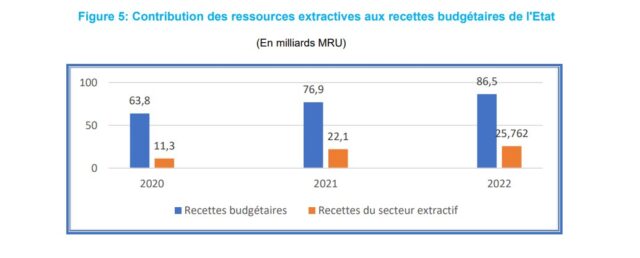- Revenues collected mainly by the Mauritanian Single Treasury Account (Compte Unique du Trésor – CUT)
- The one-off licence fee and dividends account for 58% of revenues
- National Industrial and Mining Company (Société Nationale Industrielle et Minière – SNIM) brought in 80% of mining revenues
Mauritania’s Extractive Industries Transparency Initiative (EITI) 2022 report, published in October 2023, revealed the importance of the mining sector. 29.78% of government revenue comes from the mining sector. The report also gives details of the contribution of each tax to the State budget.
State revenues from the mining sector reached more than 25 billion MRU (Mauritanian currency), or around 390 billion FCFA in 2022. This represents 29.78% of the State’s budgetary revenue of over 86 billion MRU, or around 1,340 billion FCFA. These revenues come mainly from gold, copper and iron.
Revenues from the mining sector are collected by Mauritania’s Single Treasury Account (Compte Unique du Trésor – CUT). The CUT alone collected more than 24 billion MRU of the 25 billion MRU. Its figures show that the type of tax that brings in the most revenue for the State is the one-off royalty and dividends, which account for 58% of total collections. These are followed by payroll tax and value added tax (VAT).
The National Industrial and Mining Company (Société Nationale Industrielle et Minière – SNIM) is the company that brings in the most revenue for the State, accounting for almost 80% of the State’s mining revenue in 2022.
The report indicates that the share of the extractive sector in the Gross Domestic Product in 2022 has increased compared to 2021 (21.79%) to reach 23.85%. This development is explained by the growth in value added in the extraction of metal ores, particularly gold.
Georges YOUL
#Mines_Actu_Burkina










